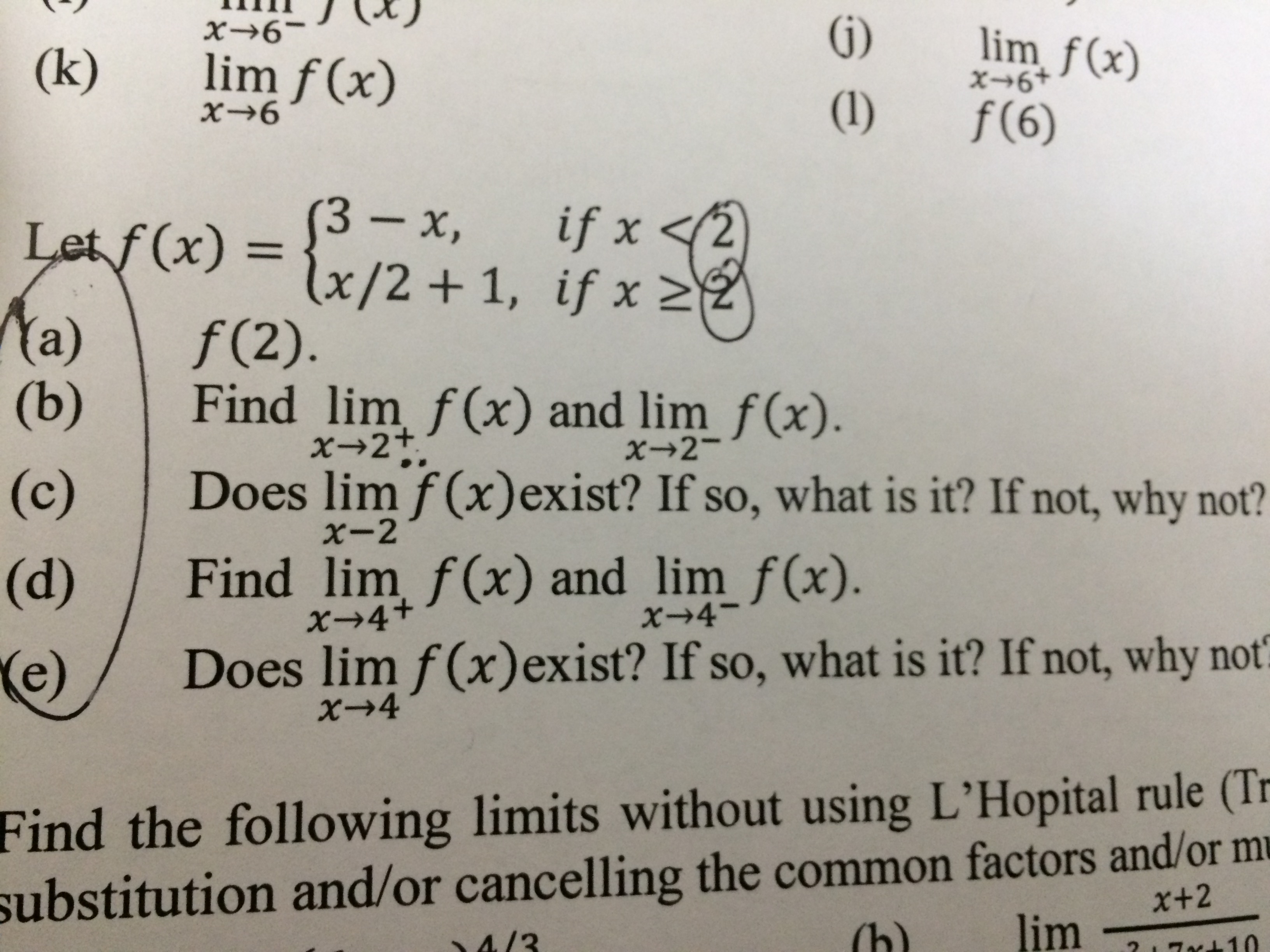Hello all, Can please someone help me with this question? with plenty or sufficient details please.Any kind of help would be greatly appreciated. Thank you.

1 Answer
Mar 13, 2018
a) We evaluate
#f(2) = 2/2 + 1 = 2#
b) For the limit from the positive side, you evaluate within the second function, because that is applicable for when
#lim_(x-> 2^+) = 2/2 + 1 = 2#
Vice versa for the left hand limit.
#lim_(x->2^-) = 3- 2 =1#
c) Since these two limits have different values they don't exist (
d) The left and right hand limits will have equal values as the second function (applicable for all
#4/2 + 1 = 3#
Therefore,
e) As explained in (d), yes
Hopefully this helps!

